- Administrator
- Albums and Singles
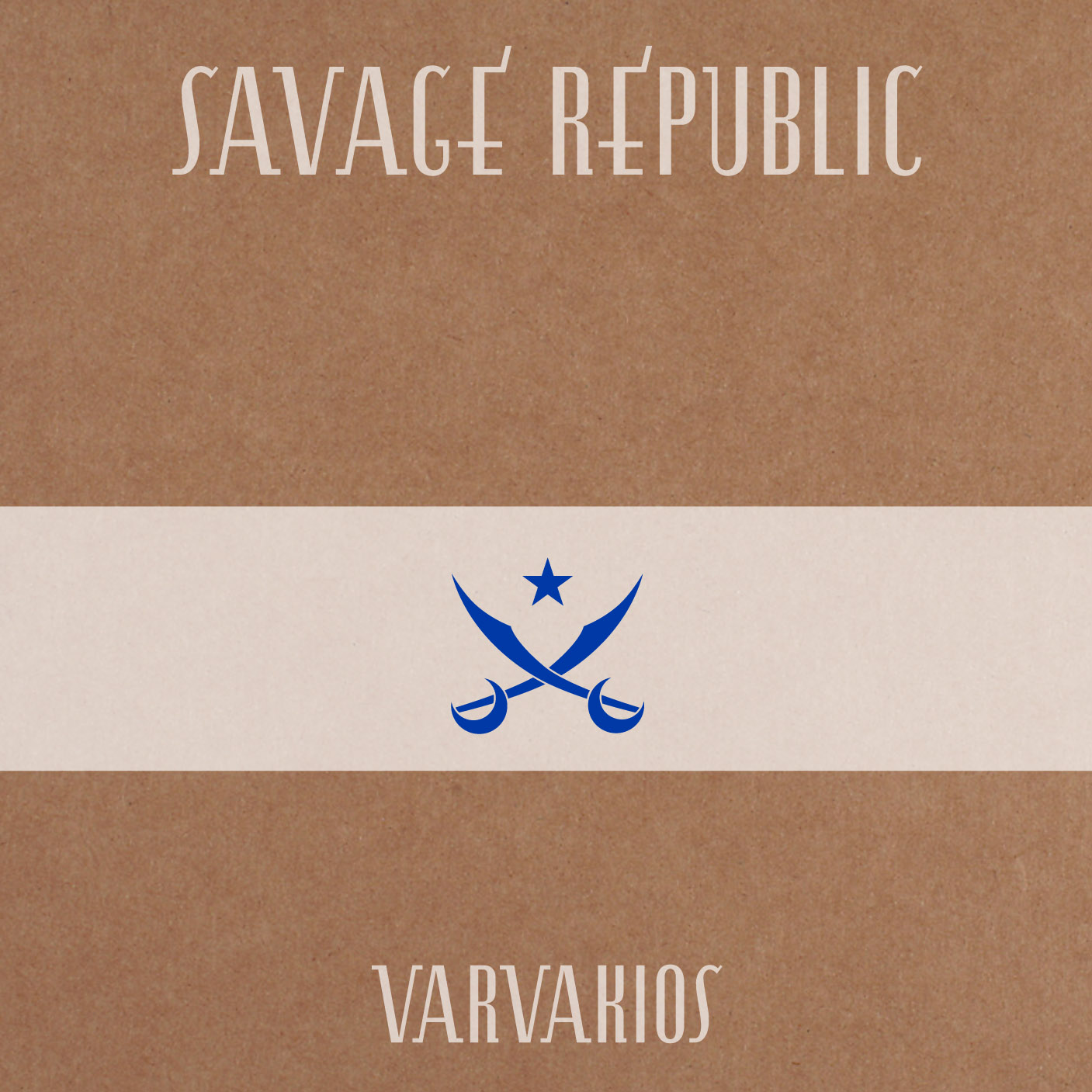 Recorded over three days in Greece, Varvakios is an odd yet perfect sound travelogue of sorts. Cold, intense, monochrome, guitar-based instrumentals—some with an almost Balkan atmosphere—alternate with field recordings perhaps in markets or auctions. The overall feeling is of urban industrial-tribalism amid an exotic, humid, foreign landscape.
Recorded over three days in Greece, Varvakios is an odd yet perfect sound travelogue of sorts. Cold, intense, monochrome, guitar-based instrumentals—some with an almost Balkan atmosphere—alternate with field recordings perhaps in markets or auctions. The overall feeling is of urban industrial-tribalism amid an exotic, humid, foreign landscape.
"The Ivory Coast," from the 1982 album Tragic Figures, made me conjure up my own image of Savage Republic as a raincoat clad post-punk group from Northern England who possibly did a couple of records while they were at art-school. The Los Angeles based group have actually recorded numerous albums throughout the last three decades, but this 2012 recording could easily be mistaken for something of that earlier time period. Joining the group this time in the ever-changing lineup is Greek resident Blaine L. Reininger of Tuxedomoon, playing violin on a few pieces, adding an almost East-European folk aspect to Varvakios.
Savage Republic has a history with Greece. The flipside of their early "Film Noir" single covered "O Andonis" by Mikis Theodorakis. I can assume the Californians considered it a beautiful song but didn't realize it had been banned as "revolutionary" in the 1960s. As a result, the band became more popular in Greece than anywhere else in Europe! After four albums between 1982-89, Savage Republic fell silent, although their sarcastic "Real Men" from Tragic Figures, is on the soundtrack of Jonathan Demme’s 1991 film The Silence of the Lambs, heard during a scene in Buffalo Bill's cellar.
Varvakios is the first Savage Republic release since 2007. The percussive, self-taught, whole-is-greater-than-the sum-of-its-parts approach makes for powerful and aesthetically pleasing music. I assume the sleeve art is by founder member Bruce Licher well-known for his beautiful creations using the letterpress on chipboard design process. This art mirrors the group sound: very simple yet iconic and distinctive. They are touring in 2013.
 
 
Read More
- Administrator
- Albums and Singles
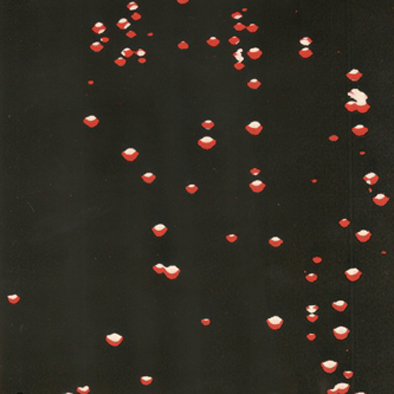 I know it will not last very long, but I am very much enjoying the current trend of noise artists turning their attention towards dance music and beats (something I definitely would not have expected when Masami Akita dabbled similarly a decade ago).  Along with Vatican Shadow and Pete Swanson, Ren Schofield's Container project is decisively leading the vanguard of that scene, though he almost slipped by me due to his association with the rather synth-centric Spectrum Spools label.  His latest effort is not quite as uniformly spectacular as last year's identically titled debut, but it definitely comes very damn close (especially the second half).
I know it will not last very long, but I am very much enjoying the current trend of noise artists turning their attention towards dance music and beats (something I definitely would not have expected when Masami Akita dabbled similarly a decade ago).  Along with Vatican Shadow and Pete Swanson, Ren Schofield's Container project is decisively leading the vanguard of that scene, though he almost slipped by me due to his association with the rather synth-centric Spectrum Spools label.  His latest effort is not quite as uniformly spectacular as last year's identically titled debut, but it definitely comes very damn close (especially the second half).
Schofield's work is quite a bit different from the other recent purveyors of beat-driven noise, as he is a bit more wholehearted in his embrace of techno (specifically, minimal techno).  In fact, there is not all that much here that could unambiguously categorized as noise, though Ren's zeal for crunch, overdrive, and metallic textures ensure that his vision is far from typical dance fare.  Instead, Schofield's history of sonic violence (as God Willing) manifests itself in more abstract ways, such relentless, obsessive repetition.
That proves to be Ren's most effective weapon and he does not use it sparingly.  The most striking example is "Perforate," as the snarling, distorted acid-inspired bass line tensely and endlessly repeats for the entire piece while the increasingly bludgeoning percussion constantly ratchets up the intensity.  Most of the other pieces are a bit less demented, but the template remains roughly the the same: a simple beat and a simple bass motif form an insistent groove that gradually becomes more and more unhinged as Schofield tweaks the rhythms, pushes the EQ into the red, and strafes it all with a host of crunches, clangs, and garbled voices.
Schofield manages to remain fairly varied in the details of his execution despite that somewhat narrow and recurring trajectory.  The most obvious anomaly is "Acclimator," where Ren allows himself a conventionally propulsive and relatively unmolested groove.  He still insistently repeats an incredibly minimal bass line and unleashes a flurry of metallic grinding and clattering, but it feels more like bizarre dub than a full-on assault.  "Dripping" is also a bit unusual, as it offers a weirdly lurching, crunching groove rather than Ren's standard pummeling and unrelenting forward momentum.  Such divergences make for a surprisingly listenable album, as they provide an effective contrast to (and respite from) the rhythmic bulldozing of LP's wilder moments.
Naturally, those wilder moments are the best part, so I was a little disappointed that only two songs achieved that degree of intensity.  That is the pessimist in me speaking though, as I could just as easily say that two out of five songs are minor masterpieces of visceral power.  I suppose Ren probably cannot keep repeating his formula of  "insistent groove gradually escalates into dense, cathartic chaos" much longer without encountering dramatically diminishing returns, but he certainly has not reached that point yet.
Samples:
 
 
 
Read More
- Administrator
- Albums and Singles
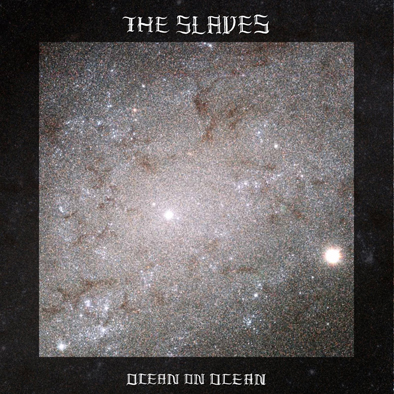 Back in 2010, this unusual shoegaze/drone duo released a truly mesmerizing CDr on Seattle's small Debacle Records label.  Sadly, not very many people noticed.  Fortunately, one of the few people who did notice was Barn Owl's Jon Porras, which eventually led to the requisite James Plotkin-remastering job, a high profile vinyl reissue, and a well-deserved second chance to share their dreamy choral gloom with the world.
Back in 2010, this unusual shoegaze/drone duo released a truly mesmerizing CDr on Seattle's small Debacle Records label.  Sadly, not very many people noticed.  Fortunately, one of the few people who did notice was Barn Owl's Jon Porras, which eventually led to the requisite James Plotkin-remastering job, a high profile vinyl reissue, and a well-deserved second chance to share their dreamy choral gloom with the world.
Most people were first exposed to The Slaves earlier this year when Digitalis released Spirits of the Sun, but this earlier effort is quite a bit different than that one.  The basic building blocks are the same  (Barbara Kinzle's reverb-drenched, sacred-sounding vocals and some minimal, organ-like synthesizer),  but The Slaves were a bit less doom-influenced back in 2010.  That is not necessarily better or worse, but Ocean on Ocean feels noticeably less dark and less harsh than its successor.  It is markedly less varied too, but that relatively narrow scope works surprisingly in its favor.  In fact, I do not think anyone else could make an album like this and make it work.  I am not sure if that means that Kinzle and Birch Cooper are brilliant or merely very lucky, but the extreme similarity of these six pieces results in a wonderfully hypnotic and immersive whole.  That goes deeper than just "this is an intelligently constructed and thematically coherent album" though: this is the kind of album that can be played in a constant loop for hours without ever growing annoying or boring.  There are not many albums like that.
There are, of course, some noticeable differences between the songs, but it is not hyperbole to state that all six adhere to the same glacial flow or that the actual chord progressions are both interchangeable and irrelevant.  The differences, when they appear, are almost exclusively textural and pertain to Cooper's guitar work.  The most notable example is probably the seagull-like feedback swooping above the opening "Seventeen," but his subtle escalations of density and distortion are both omnipresent and essential dynamically.  His restraint is quite singular, actually, as he regularly manages to evoke roiling, controlled chaos without ever quite breaking Kinzle's warmly hallucinatory spell.
The aesthetic of Ocean on Ocean can be perfectly summarized as a "variations on a theme," with the theme being "incredibly slow-moving and hazy swells of warmth over distant snarls of noise."  There is literally nobody else that sounds quite like this, but this album does share a lot of common stylistic ground with This Mortal Coil and The Hope Blister, albeit not at all in a predictable way (no Big Star covers, for example).  Rather, The Slaves offer a slowed-down, stretched-out, and blurrily indistinct vision of that sound, like how ...Smiles OK might sound under the influence of a heroic dose of heroin or cough syrup.  Which, as it turns out, is quite beautiful.
Samples:
 
Read More
- Administrator
- Albums and Singles
 The first release from this Archieuthis Rex side-project, Trithemius drops much of the metal trappings and instead focuses on synthetic beats and bleak, mangled electronics resulting in an inhuman and aggressive piece of modernized industrial.
The first release from this Archieuthis Rex side-project, Trithemius drops much of the metal trappings and instead focuses on synthetic beats and bleak, mangled electronics resulting in an inhuman and aggressive piece of modernized industrial.
On "–ó–∫–∑–æ—Ä—Ü–∏–∑–º" the industrial vibe comes through the clearest, via aggressive, processed synthesizer, mangled guitar and heavily processed voice fragments.It just barely clings to a sense of structure amidst swirling chaos, and instantly reminded me of the b-sides to VIVIsectVI.Via overdriven thuds and rhythmic drum machine, "Collapsing Palace" goes for a more death industrial, Cold Meat Industry like sound, oppressive and bleak without being dull.
"Dirge" is an aptly named track, initially mixing pounding kettle drum beats atop grinding, scraping noise as what may or may not be human voices float up from the deep.Even when it becomes a bit more psychedelic and synth heavy in its later moments, it retains that malignant, funereal march throughout.
The simple rhythm and fuzzed out, memorable bass sound of "Red Altar" goes for more conventional, almost rock sounds, and the noise squall of the title track comes across as a bit more metallic, rather than spacey. With its wavering keyboards and feedback-laden guitar, "Antipalus Maleficiorum" resembles Jesu's more dissonant material, but even further removed from traditional music conventions.However, the subtle melody and gauzy feedback balances the light and the dark nicely.
Considering the recent resurgence in the popularity of minimal wave and synth pop sounds, I suppose a re-embracing of what industrial music became in the 1980s, is likely on the horizon, and I hope that more artists take the Kapustin Yar approach of integrating some of those genre tropes into an updated framework. Trithemius has moments of familiarity that take me back to my high school favorites, but still feels like a new and complicated work.However, the cynic in me fears that the world will end up with a slew of Front Line Assembly carbon copies…I hope I am wrong.
samples:
 
Read More
- Administrator
- Albums and Singles
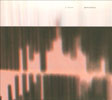 No stranger to ambient music, Kerry Leimer has been active since the late 1970s, creating his own synthetic compositions when the genre was in its infancy. Permissions is, in part, a collaborative work with Taylor Deupree (who produced the album and added to some of the tracks. The resulting album is a long form album that both conjures the early days of electronic music, but in a distinctly modern framework.
No stranger to ambient music, Kerry Leimer has been active since the late 1970s, creating his own synthetic compositions when the genre was in its infancy. Permissions is, in part, a collaborative work with Taylor Deupree (who produced the album and added to some of the tracks. The resulting album is a long form album that both conjures the early days of electronic music, but in a distinctly modern framework.
Permissions is conceptually a form of "disassembled music," in which something that resembles a conventional song is pulled apart to its core elements and then are reshaped and processed into something else entirely.On the sixth part of the album (which is made up of 16 untitled pieces), this is quite clear, with its erratic, unpredictable thuds and fragmented guitar sounding like traditional music clinically dissected.The same sensibility is evident at the end on the 14th piece, which has the same mix of occasional beats and note clusters.
Other parts come across as more straight ahead ambient, such as the reversed metallic percussion and murky layers of the 11th segment: it feels less adventurous but more meditative.The same goes for the melancholy, glacial pace of the seventh piece that is a bit more grounded and stable compared to those around it.
The remainder of the album lurks in that purgatory between complex, almost musical pieces and sparse, more skeletal studies.The third piece pairs disembodied synth beeps in a swirling space with microscopic pieces of guitar scrapes and far off bass heavy formless drones.Immediately after is a pastiche of icy winds and unidentifiable tones, with what could be power tools being used off in the distance for added effect.There remains a delicate beauty, even though there is a slightly more frigid feel to the track.
Given the length of the album as a whole, it is not too surprising that there are a few moments that did not fully click with me, although they are few and far between.At times the fragmented swirl of guitar, strings and synths become a bit too disjointed and chaotic, which is just made more obvious with understated surrounding tracks.Also, at times, the untreatedguitar sound is simply veers too close to new age muzak for my ears.
On the whole though, the weaker moments are well outshined by the stronger ones that make up the bulk of the album.In addition to Leimer's compositional strength, there is that organic but digital sheen that is quite familiar for anyone that is versed in Taylor Deupree's solo work, but it never overshadows the underlying material.Permissions makes for a strong, modern take on ambient with a healthy bit of deconstructed pop music that erratically makes itself known.
samples:
 
Read More
- Administrator
- Albums and Singles
 On these ten original songs Monti renders the dramatic political history and culture of Italy into animal characters. Sounding passionate, sarcastic, unhinged, and ahead of her time, she uses the stinging words of Italian anti-Fascist writer and persecuted homosexual Aldo Braibant, framed in mysterious found sounds and synthesizer by Alvin Curran - here combining for the first time with Steve Lacy on soprano sax.
On these ten original songs Monti renders the dramatic political history and culture of Italy into animal characters. Sounding passionate, sarcastic, unhinged, and ahead of her time, she uses the stinging words of Italian anti-Fascist writer and persecuted homosexual Aldo Braibant, framed in mysterious found sounds and synthesizer by Alvin Curran - here combining for the first time with Steve Lacy on soprano sax.
Maria Monti acted in films such as Sergio Leone’s A Fistful of Dynamite and Bernardo Bertolucci's 1900 along with roles in television. Her musical exploits began in the 1950s in cabaret and by the 1970s she had become something of a dramatic avant-folk artist. ll Bestiario (The Bestiary) has some wild poetic lyrics which can be read in a PDF at the Unseen Worlds site. The track titles translate into such things as "The Peacock," "He Believes The Sheep To Be A Horse," and "The Snake in Love." At the climax of the album are two longer pieces, "The Hibernating" and "Air, Earth, Water and Fire," which seem to allude, as does the whole project, to the value of allowing nature in its many forms to flourish, and to show the corruption of the powerful. In part this stems from real attempts to link sexuality with the politically undesirable, as in the case of the prosecution and four year imprisonment of Braibant; a tool by which to embolden the old order and political right by demonstrating that Communism was corrupting Italian youth and families, and to split the left who—despite the waves of free love and rebellion which climaxed in 1968—were far from universally accepting of homosexuality. Many intellectuals such as Moravia, Eco, and Pasolini protested. Apparently, one of Braibant’s co-defendants was released earlier under the proviso that he live with his parents and only read books that were more than 100 years old.
It is unclear how Curran and Lacy came to be involved with ll Bestiario although both were living in Italy at the time. I like to imagine that someone had heard Lacy’s 1966 live album The Forest and The Zoo almost as much as I want to believe that Curran took inspiration of working with Monti into his own 1975 release Songs and Views of The Magnetic Garden. Maybe it was just that both were living in Italy at the time and were happy to collaborate with a well-known talent such as Monti. For this is not a mere dabble in music by an actress, Monti has released many other records and while neither Curran or Lacy is at their most challenging, the undercurrent sound and arrangements are subtle and intriguing. They have the good sense to allow Monti’s heartfelt and scornful voice to get full rein so that the overall sense is of a real labor of love, at times similar to Linda Perhacs’ Parallelograms, but at others a great deal more theatrical.
Guitarists Luca Balbo and Tony Ackerman also feature, along with Roberto Laneri on baritone sax. There is insane cabaret, weird and lovely psychedelic folk, and minimalist avant-expressionism aplenty on this past and future rarity. Il Bestiario was released on the Italian Ri-Fi label in 1974 and this reissue is limited to 500 copies.
Read More
- Administrator
- Albums and Singles
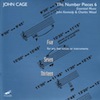 This is one of the latest in Mode Records long-running and expansive John Cage series and is one of a myriad of releases that are coinciding with his 100th birthday. The three pieces are all from the same late period in Cage’s composing career (indeed Thirteen is his last ever composition) and reflect an artist that was continuing to challenge himself, the musicians he worked with and listeners with new ideas on music and listening. The ensemble Essential Music took up this challenge and have created a stunning set of interpretations of these underrated pieces.
This is one of the latest in Mode Records long-running and expansive John Cage series and is one of a myriad of releases that are coinciding with his 100th birthday. The three pieces are all from the same late period in Cage’s composing career (indeed Thirteen is his last ever composition) and reflect an artist that was continuing to challenge himself, the musicians he worked with and listeners with new ideas on music and listening. The ensemble Essential Music took up this challenge and have created a stunning set of interpretations of these underrated pieces.
 
For the uninitiated, the Number Pieces all follow a general formula; in brief, an ensemble whose size matches the number in the title of the piece follows the brief but quite prescriptive (for Cage anyway!) instructions which usually entail the use of exact times down to at least the second. Most, if not all, the renditions of these Number Pieces end up sounding very similar but Essential Music do their best to create innovative and exciting versions of the works (probably because these recordings are all from 1994, not long after all these pieces were composed). For example, Five allows the performer to use any instrument so Essential Music look outside their usual armory of gear to the humble glass bottle. Although the idea was initially met with skepticism by Cage, it turns out that the group’s decision to perform Five by blowing into bottles that corresponded to the particular pitches specified in the score turned out to be a simple but highly effective idea. The distinctive tonal palette of glass bottles gives this particular rendition a unique sound (something close to alien flutes) and the sense of play that is appropriate to Cage’s work in general.
Picking up their regular instruments, Essential Music follow the more traditional route for the remaining two pieces. For both Seven and Thirteen, Cage specifies the type of instrumentation that would be fairly common in smaller ensembles along with varying emphasis on what each instrument is allowed to do. In Seven, the woodwind and percussion are very restricted whereas the strings and piano are given more freedom so Essential Music have created a staid, beautiful piece where the strings move in and out of consonance with each other and the piano.
The final piece, Thirteen, takes up the bulk of the disc at 30 minutes. Here, Cage’s directions state that long notes must be played quietly but short notes can be of any dynamic. As expected, a low, quiet hum creates the foundation of the piece as louder, almost hysterical, stabs of strings, piano and percussion leap out like electric shocks. The piece drifts into the kind of places György Ligeti might venture, though probably not by design (I wonder if Essential Music had been working on any Ligeti at the time as the influence is quite strong in places). What is truly striking here is that this is music that is governed mostly by a stopwatch but feels to ebb and flow entirely naturally, as if plucked from the ether.
While these pieces are deceptively simple in their instructions, even if generally quite specific for Cage, they do highlight the shortcuts in thinking that can happen when a musician is faced with such scores. Essential Music manage to perform with the spirit in which Cage intended and in the case of Five, in a way which he had not. This is a good example of what I believe Cage always wanted to achieve, a way to foster creativity without sacrificing the discipline of the performing artist.
samples:
 
Read More
- Administrator
- Albums and Singles
 These three albums document a historical tour of Japan by John Cage in 1962. Accompanied by David Tudor, they join a number of similarly minded Japanese composers and artists in presenting a fascinating program of Cage’s own music and compositions along with Japanese and other international composers. The result is not so much a culture clash as an allying of forces against tradition. Yet, it seems a little cynical to me to promote these releases as John Cage releases when in fact they offer up a wealth of non-Cage compositions and performances (Tudor seems to be more central to the tour than Cage even!). Be that as it may, these are a powerful collection of recordings of an almost mythic tour.
These three albums document a historical tour of Japan by John Cage in 1962. Accompanied by David Tudor, they join a number of similarly minded Japanese composers and artists in presenting a fascinating program of Cage’s own music and compositions along with Japanese and other international composers. The result is not so much a culture clash as an allying of forces against tradition. Yet, it seems a little cynical to me to promote these releases as John Cage releases when in fact they offer up a wealth of non-Cage compositions and performances (Tudor seems to be more central to the tour than Cage even!). Be that as it may, these are a powerful collection of recordings of an almost mythic tour.
Shock Vol. 1 opens with Toru Takemitsu’s Corona for Pianists, which is very much indebted to Cage’s own indeterminate pieces for piano. Here Tudor performs with Yuji Takahashi, both pianists using extended technique to wrestle sounds from the piano that are outside the usual realm of the pianist. While the results are not as ear-opening as something like the prepared piano or even something like Charlemagne Palestine’s Strumming Music, Takemitsu’s piece at least demonstrates how the ideas of the New York school were not confined to the usual list of experimental composers in the West. In fact, the way that Corona for Pianists stealthily leads into the following piece, Christian Wolff’s Duo for Pianist & Violinist highlights that these global connections were stronger than expected based on my usual reading of contemporary composition (for example Alex Ross’ fantastic book The Rest is Noise still takes a largely western perspective on what was far from just a western phenomenon).
The first Cage piece in the Shock series comes in the form of Variations II, performed here by Tudor and Cage himself. Other recordings of this piece have veered towards the raucous but here the spaces between the sounds predict Cage’s work in later years, particularly those of some of his Number Pieces (see here for a review of The Number Pieces 6). An occasional cough, the hiss of the recording tape and the sound of the performers shuffling around on the stage are as important here as the brutal piano and electronic amplification. The same constant noise found on some other recordings pales in comparison to this masterful use of punctuated activity.
samples:
- Takemitsu - Corona for Pianists
- Wolff - Duo for Pianist & Violinist
- Cage - Variations II
 Karlheinz Stockhausen’s Klavierstück X is the first piece on Shock Vol. 2, a piece initially dedicated to and meant to be performed by Tudor in 1961. Beaten to the premiere by a week by Frederic Rzewski in Palermo. The piece sees Stockhausen’s use of serialism knocked down and re-imagined in a complex, difficult way. It sounds almost like some of Cecil Taylor’s free jazz experiments but with a heavier, cloying sound. While I admire Stockhausen’s electronic works (and his incredibly ambitious ideas like the Helicopter String Quartet from the Licht series of operas), his works for piano have never excited me in the same way. As such, presenting Klavierstück X in the middle of a program of far more interesting piano works only serves to highlights the slightly stifling nature of Stockhausen’s piece; too many parameters and too many instructions that can only hem in a pianist rather than allow them the room to develop.
Karlheinz Stockhausen’s Klavierstück X is the first piece on Shock Vol. 2, a piece initially dedicated to and meant to be performed by Tudor in 1961. Beaten to the premiere by a week by Frederic Rzewski in Palermo. The piece sees Stockhausen’s use of serialism knocked down and re-imagined in a complex, difficult way. It sounds almost like some of Cecil Taylor’s free jazz experiments but with a heavier, cloying sound. While I admire Stockhausen’s electronic works (and his incredibly ambitious ideas like the Helicopter String Quartet from the Licht series of operas), his works for piano have never excited me in the same way. As such, presenting Klavierstück X in the middle of a program of far more interesting piano works only serves to highlights the slightly stifling nature of Stockhausen’s piece; too many parameters and too many instructions that can only hem in a pianist rather than allow them the room to develop.
The rest of Vol. 2 is given over to Cage’s 26'55.988" for 2 Pianists & A String Player. The piece is a combination of two separate works, one for two pianists and another for a string player in which Cage specifies not only preparations for the piano but, in typical Cage style, an undefined X factor which is left to the performers. In the minds of skilled pianists like Tudor and Toshi Ichiyanagi, the piano part of this piece is bubbling with energy (especially in contrast to the Stockhausen piece preceding it). Violinist Kenji Kobayashi takes on the string player’s role but it is the addition of Yoko Ono on vocals that takes this piece to unexpected places. Her time in America engaging with Ichiyanagi in the Fluxus group translates well into her performance and it certainly seems quite left of center, even for Cage. Her sexualized panting is not something I would readily associate with the prepared piano! It is worth noting that at this time, her marriage to Ichiyanagi had fallen apart, perhaps adding a note of tension to this performance (and indeed the Japanese tour as she acted as Cage and Tudor’s interpreter).
samples:
- Stockhausen - Klavierstück X
- Cage - 26'55.988" for 2 Pianists & a String Player
 Based on the lighthearted atmosphere emanating from the audience, tension is not something that could be ascribed to the performance of 0’00" which is included on Shock Vol. 3. While the notorious 4’33" was intended to focus the listener on the ambient and incidental sounds around them, its "sequel" instead focuses the listener on the particular non-musical actions of an individual. Described by Cage as:
Based on the lighthearted atmosphere emanating from the audience, tension is not something that could be ascribed to the performance of 0’00" which is included on Shock Vol. 3. While the notorious 4’33" was intended to focus the listener on the ambient and incidental sounds around them, its "sequel" instead focuses the listener on the particular non-musical actions of an individual. Described by Cage as:
"…nothing but the continuation of one’s daily work, whatever it is, done with contact microphones, without any notion of concert or theater or the public, but simply continuing one’s daily work, now coming out through loudspeakers. What the piece tries to say is that everything we do is music, or can become music through the use of microphones,"
it is easy to see this piece as being one of the clearest examples of the Cagean philosophy of music. It is also fascinating to consider that performances of 0’00" by necessity have a visual (if not theatrical) element to them but there is no description in the liner notes as to what Cage was doing on stage during this performance. Was he writing music on stage? Organizing his diary? The only indication is a single photo of him lighting his pipe but that could not explain the 18 minute duration of the piece nor the odd bits of laughter from the audience. Instead, we are left only with the music of his actions, divorced from the performance itself.
The rest of this final disc is given back over to the piano with Michael von Biel’s Composition II for 2 Pianos and Ichiyanagi’s Music for Piano #7. Both composers have strong links to Fluxus and both pieces highlight different aspects of the movement. von Biel’s piece is almost percussive as the pianists pounce on the keys sporadically with the inside of the pianos being scraped and caressed from time to time. There is little of the tongue-in-cheek conceptual ideas that I would normally associate with Fluxus (such as La Monte Young’s contemporaneous scores that involved releasing a butterfly into the music hall or feeding a piano with hay) but the deliberate undoing of any logical or traditional musical structure is wonderful. On the other hand, Ichiyanagi takes the oddball madness of Fluxus and runs with it to equally great effect. Music boxes, violent piano stabs and random tape recordings come together to create a sonic circus. Together, the three pieces on Shock Vol. 3 carry the most power as they still have the capacity to inspire awe in the average listener even in this age of overexposure to sound art, noise and improvisation.
samples:
- Cage - 0'00"
- von Biel - Composition II for 2 Pianos
- Ichiyanagi - Music for Piano #7
 
Read More
- Administrator
- Albums and Singles
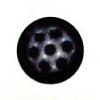 Bloom is the first in a series of three releases by the collective known as Fovea Hex. Quiet and moving, this is a very promising first chapter by a group that contains some of ambient and experimental music’s most golden children backing up some equally golden voices.
Bloom is the first in a series of three releases by the collective known as Fovea Hex. Quiet and moving, this is a very promising first chapter by a group that contains some of ambient and experimental music’s most golden children backing up some equally golden voices. Fovea Hex sees the likes of Brain and Roger Eno team up with Cloadagh Simonds (most famous for her work with Thin Lizzy and Mike Oldfield) and Carter Burwell (famous for soundtracking pretty much all of the Coen brothers’ works) to make some beautiful songs that touch on traditional, ambient and experimental music. As well as playing on one of the tracks, The Hafler Trio’s Andrew McKenzie has performed his production magic on each of the tracks. His influence is apparent but not overpowering. Simonds is the focus of the group, these are her songs.
Simonds’ lyrics are powerful, especially because of her delivery. On“That River” she conjures up images of a house that morphs all of asudden into this beautiful description of a river: “She swerves asapphire soul over the land.” Her singing is wrought with emotion, hervoice blends a few traditional styles of singing, most prominentlyIreland’s sean nós singing. I found that the other vocalists and musicians were all sympathetic to this style (half of the members of Fovea Hex have a solid traditional Irish music background) which means that the songs don’t end up sounding like a hodgepodge of new age commercial rubbish like the demon queen Enya.
As expected by the line up, the music is all soundscapes and ambience. Despite the mention of fretless bass and zither in the liner notes, the opening track “Don’t these windows open?” seems to consist entirely of disembodied voices with Simonds dancing lyrically over them. The entire record makes great use of sound as a three dimensional phenomenon. By walking around the room the sounds take on different characters. This is the subtle McKenzie effect I referred to above, it’s a trademark Hafler Trio technique but Fovea Hex does not sound like the Hafler Trio. Fovea Hex is more reminiscent of Coil’s work in their Solstice and Equinox series.
With some editions of the EP there is a bonus disc of reworkings by Andrew McKenzie. “The Explanation” is a single track of abstracted drones and utterances from Bloom. It gels together well, I wasn’t sure (considering how strong I thought the original songs were) that such a CD would work but McKenzie dissolved any doubts I had. This disc along with the main EP makes for a very fine piece of work. Bloom marks the beginning of the Neither Speak nor Remain Silent trilogy but if the quality keeps up I hope Fovea Hex keep going beyond this.
samples:
Read More
- Administrator
- Albums and Singles
 The third release from Canada’s Tangiers is the kind of recordtailor-made for vinyl. A thick shroud of cigarette smoke and lo-ficackle emanates from the records twelve tracks here. My sense is that thelabel “garage-rock” has been slapped all over it, but that doesn’tentirely get it.
The third release from Canada’s Tangiers is the kind of recordtailor-made for vinyl. A thick shroud of cigarette smoke and lo-ficackle emanates from the records twelve tracks here. My sense is that thelabel “garage-rock” has been slapped all over it, but that doesn’tentirely get it.
French Kiss Records
The classicism here recalls plenty of scruffy looking bands of yore:the modish bent of The Jam, the persistent hooks of Hoboken pop bandsThe Bongos and The Feelies, and the cassette tape hiss of Guided byVoices (indeed, former GbV drummer Jon McCann pounds the skins here).While Tangiers hardly breaks new sonic ground, the result of The FamilyMyth is a record that is punchy and upbeat without sacrificing theband’s gruff charm.
On “A Hundred Million Feathers’ Weight,” JoshReichmann’s slurred vocals line up nicely with his treble-drenchedguitar and the simple keyboards of Shelton Deverell. “Dragging theHarbour” follows and manages to recall spirit of ’77-era Buzzcocksbetter than even the Buzzcocks can managethese days. If there is acomplaint to be lobbed at The Family Myth, it’s that there is littleallowing the tracks to stand apart from each other. The songwriting istight as an unopened lid, but my sense is that Tangiers may have yet towrite their best batch of songs.
We get a small hint of what else theband can do when they write the best Echo and the Bunneymen song theynever wrote on “Your Pristine Hands.” The song percolates on ahigh wire guitar part and understated keyboard fills. McCann meanwhileis all ride cymbals on this one, a tactic that would have cluttered upother songs but which works surprisingly well here. I’m sure hoards arebanging down the door to call this stuff “garage rock” but, like Isaid, that doesn’t quite get it. Their sound is a bit too intelligentand restrained.
Tangiers may drink at the same bar as The Strokes andthe Mooney Suzuki, but I get the sense they're more inclined to show upfor quiz night then happy hour.
samples:
Read More
- Administrator
- Albums and Singles
 Laetitia Sadier is one of the most distinctive voices in all of popular music. Two years after The Trip, her first album under her own name, and a deliberate step away from Stereolab, comes Silencio. With Moog, oscillators, krautrock and bossa nova rhythms, Tim Gane on guitar, and Sadier's confident, alluring voice, this is familiar and beloved territory.
Laetitia Sadier is one of the most distinctive voices in all of popular music. Two years after The Trip, her first album under her own name, and a deliberate step away from Stereolab, comes Silencio. With Moog, oscillators, krautrock and bossa nova rhythms, Tim Gane on guitar, and Sadier's confident, alluring voice, this is familiar and beloved territory.
Silencio is the closest thing to a new Stereolab record. Not that Sadier has abandoned the looser structures which worked well for The Trip; wherein she expressed some of her feelings about the death of her sister. Indeed, she returns to that loss on the heartfelt and ethereal "Silent Spot" However, the aforementioned elements, along with the pacing of certain of these new tracks, as well as the setting of socialist economic and political analysis against light, hypnotic, retro-futurist beats is a good reminder of Stereolab's persuasive guile.
"The Rules of The Game" starts the record slowly, as if depicting someone gradually waking in a lonely but familiar apartment. Yet there is a hint of menace which is made absolutely clear with the lines: "The ruling class neglects again responsibility over indulged children/Drawn to cruel games, pointless pleasures, impulsive reflexes–a group of assassins." This theme is similar to the roots of the heartless, seething, psychotic rage of the bullying proto-fascist in Robert Musil's 1906 novel Young Torless and, probably, also takes inspiration from Jean Renoir's classic 1939 movie La Règle Du Jeu. It also speeds up in a way that will please Stereolab fans.
By contrast, the hints at sexual politics in "Lightning Thunderbolt" come across as mere playful jabs. The uptempo examination of The Body Economic that is "Auscultation to the Nation" is, of course, jangly and light, as Sadier lashes the G20 and the "too big to fail" houses of international finance. The title also has me wishing for a future collaboration with Helen Gillet, who often performs live with cello and stethoscope. That tool of medical examination is one of several elements which show the core theme of this album: the means by which to reveal inner or hidden truth.
There are some clues and perhaps some red herrings, but am reminded that in Lynch's Mulholland Drive the Club Silencio was the place where trickery was openly acknowledged, even as it continued to be perpetrated. Similarly, the final track has Sadier in a French church—her voice double-tracked whispering in English and speaking in French with a layer of reverb—inviting us to enjoy the truth by listening to the silence. Of course, as with Cage's "4'33"" the remainder of the track is far from silent. I remember that Stereolab had a marvelous track called "John Cage Bubblegum".
It is common for people to claim—of voices they love—that they would be happy to hear so-and-so sing the phone book. Her music may now be less of a seamless, stylized, vision of the future set in a golden age of design, fashion, and travel, and I do not find her political lyrics to be at all dull, but Laetitia Sadier's voice still meets the "phone book" standard.
Read More


